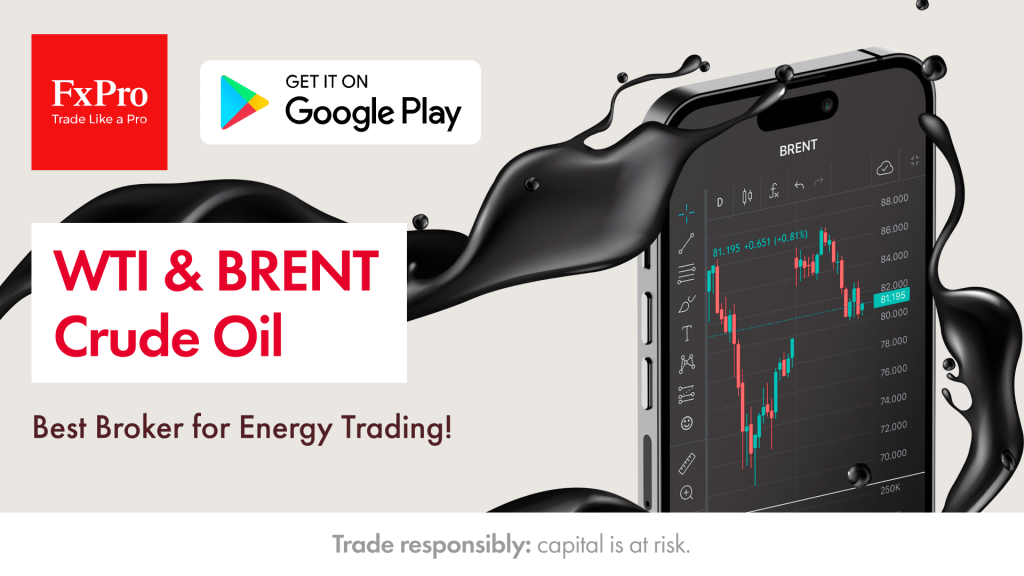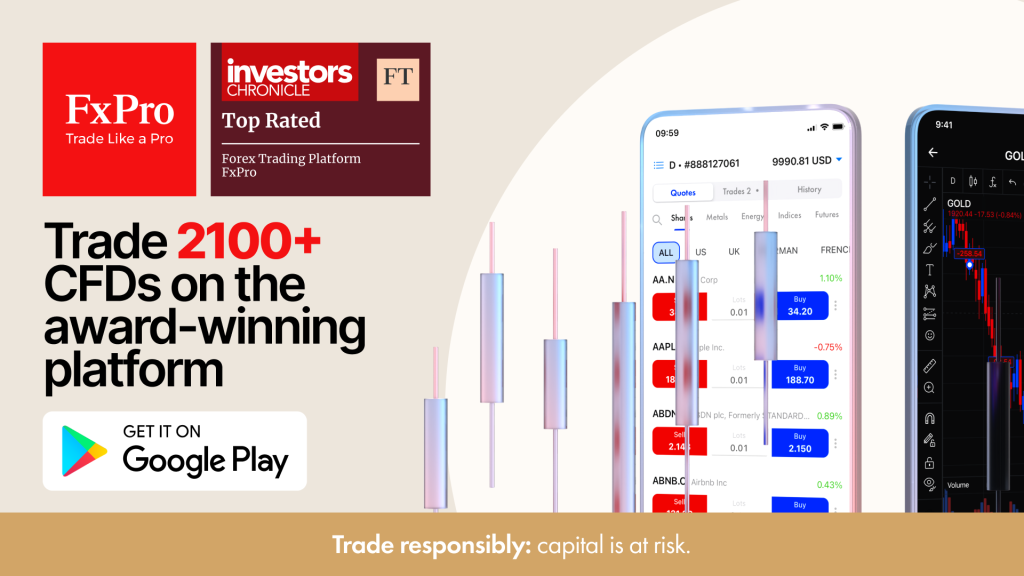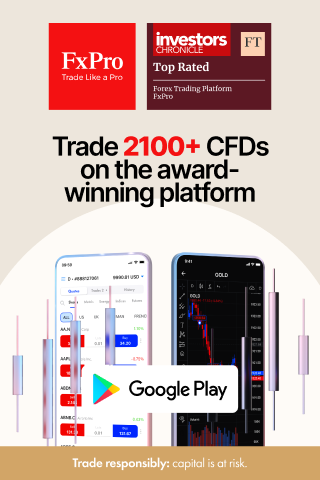Looking for a reliable CFD broker? Join FXPro Now and enjoy the quality of a trustworthy brokerage with international licenses!
Range-bound trading occurs when the price of an asset moves consistently between two clear levels: support and resistance. Instead of forming new highs or lows, the market fluctuates within this confined area, creating what is known as a trading range. This condition often signals a balance between buyers and sellers — neither side is strong enough to push the price into a new trend.
Traders who recognize a range-bound market can use it to their advantage by buying near support and selling near resistance.In simple terms, range-bound trading means the market is moving sideways rather than trending. These phases can last for hours, days, or even weeks, depending on the asset and market conditions. Understanding when a market is range-bound helps traders choose the right strategies and avoid false breakouts.
Understanding a Range-Bound Market

A range-bound market is characterized by price oscillations between two horizontal boundaries. The lower boundary represents support, where buying interest tends to appear, while the upper boundary marks resistance, where selling pressure increases. When prices repeatedly bounce between these levels, traders identify a clear trading range.
This sideways movement, often referred to as a box range, indicates that the market lacks a dominant trend. During these periods, many trend-following systems perform poorly, while range traders find opportunities within the consistent back-and-forth movement. Recognizing such patterns allows traders to adapt their strategy to current market behavior rather than forcing trades in non-trending conditions.
Trading range bars can help visualize these movements, showing periods of consolidation and potential points where momentum might shift. The broader understanding of these cycles gives traders a framework for deciding when to enter, hold, or exit positions.
Identifying Range-Bound Conditions

Detecting when the market is range-bound is essential before applying any trading strategy. A range-bound condition is visible when price movements are confined between clear support and resistance levels without forming significant higher highs or lower lows. In such phases, the market lacks directional strength, and volume often decreases compared to trending periods.
Traders use specific range bound indicators to confirm these conditions. The Relative Strength Index (RSI) helps spot overbought and oversold zones within the range. Bollinger Bands are also effective — when the bands narrow, it indicates reduced volatility and a possible sideways phase. The Stochastic Oscillator and Average True Range (ATR) can further validate that the market is consolidating rather than trending.
A trading range indicator can automatically mark these levels, helping traders visualize the boundaries of the range. Narrow range trading strategy setups are particularly useful for identifying periods of compression that often precede a breakout, allowing traders to prepare for the next move.
Range-Bound Trading Strategies

Once a trader identifies a range-bound market, the next step is to apply a range trading strategy. The main principle is simple: buy near support and sell near resistance. This method relies on the assumption that prices will continue to respect these levels until a breakout occurs. Patience is key, as entries should be timed when the market reaches these boundaries with confirming signals from technical indicators such as RSI or Stochastic.
A solid range bound trading strategy includes clear risk management rules. Stop-loss orders are usually placed just outside the range, below support for buy positions and above resistance for sell positions, to protect against sudden breakouts. Take-profit levels are typically set before price reaches the opposite boundary, securing profits within the existing range.
Range trading can be applied to both forex and stocks. In a forex range trading strategy, traders often focus on pairs like EUR/USD or USD/CHF that tend to move sideways during certain sessions. Range trading stocks involves identifying equities that show consistent horizontal price behavior, which can offer predictable intraday opportunities.

Trading a Range in Forex and Stocks
Trading a range successfully requires understanding how different markets behave within consolidation phases. In forex, range bound forex pairs often appear during low-volatility sessions, such as the Asian session, when major price moves are limited. Traders can take advantage of these stable conditions by entering trades at the edges of the range and exiting before the price reverses. Pairs like EUR/CHF or AUD/NZD often display such sideways patterns, making them suitable for range trading forex approaches.
In the stock market, range bound stocks for intraday trading are common when the broader market lacks direction. Traders look for stocks moving consistently between defined highs and lows within a session, using short-term technical indicators to time entries and exits. This type of environment favors patient traders who can wait for price to reach extreme points of the range.
To trade effectively in a range bound market, it’s important to confirm the boundaries using multiple timeframes. Combining volume analysis with oscillators like RSI or Stochastic can improve accuracy. Trading a range is less about predicting direction and more about capitalizing on repeated movements between consistent levels.
Open Range and Breakout Strategies
While range-bound trading focuses on sideways price movement, traders must also prepare for the moment when the price escapes the range — a breakout. One of the most popular methods to capture this move is the open range trading strategy. This approach involves identifying the price range formed during the first minutes or hour after the market opens and then trading potential breakouts beyond that range.

The open range trading method works particularly well in active markets like major forex pairs or high-volume stocks. Once the open range is defined, traders watch for a decisive break above resistance or below support, signaling that the market is transitioning from a range to a trend. These breakouts can offer strong momentum opportunities, but they also carry the risk of false signals.
Traders must manage risk carefully by waiting for confirmation, such as increased volume or a clear candle close beyond the range. Understanding the difference between a genuine breakout and a false move is crucial for success in trading range breakout setups.
Pros and Cons of Range-Bound Trading
Pros of Range-Bound Trading
- Clear and well-defined entry and exit points between support and resistance levels
- Works well in calm, predictable market conditions with limited volatility
- Suitable for intraday and short-term trading strategies
- Allows multiple profitable trades within the same range cycle
- Easier to manage risk due to fixed range levels
- Useful for learning price action and support/resistance behavior
Cons of Range-Bound Trading
- False breakouts can occur, leading to losses if stop-losses are not properly placed
- Ineffective during strong trending markets where ranges quickly break
- Requires constant monitoring to detect when the market shifts from range to trend
- Limited profit potential since price movement is confined within boundaries
- News events or sudden volatility can invalidate the range instantly
- Can lead to overtrading in choppy or unclear market conditions

Conclusion: Mastering the Range
Range-bound trading can be a powerful approach for traders who understand market rhythm and price behavior. By recognizing when the market is moving sideways and applying the right strategy, traders can take advantage of repetitive price swings between support and resistance. The key lies in patience, discipline, and the ability to adapt when conditions change.
Successful range traders focus on precision rather than prediction. They use indicators to confirm boundaries, manage risk effectively, and avoid emotional decisions when the market becomes unpredictable. As volatility increases or a breakout forms, it’s essential to shift focus from range trading to trend trading to stay aligned with market direction.
Ultimately, mastering range-bound trading helps traders improve timing, discipline, and consistency. It’s not just about capturing small movements — it’s about understanding how markets breathe, consolidate, and prepare for the next trend.
FAQ
What is range-bound trading?
Range-bound trading is a market condition where the price moves repeatedly between defined support and resistance levels without forming a clear uptrend or downtrend. Traders buy near support and sell near resistance to profit from these oscillations.
How do I know if the market is range-bound?
A market is considered range-bound when price action stays within a horizontal zone, with no new highs or lows being formed. Indicators like RSI, Bollinger Bands, or ATR can help confirm reduced volatility and sideways movement.
Which indicators are best for range trading?
Common range trading indicators include RSI, Stochastic Oscillator, Bollinger Bands, and trading range indicators that automatically detect consolidation zones.
Can range-bound trading be applied in forex?
Yes, forex range trading strategy setups are popular, especially during low-volatility sessions such as the Asian session. Pairs like EUR/CHF or AUD/NZD often show stable range patterns ideal for this method.
Is range-bound trading profitable?
It can be profitable when applied with discipline and strong risk management. However, traders must be cautious of sudden breakouts or market shifts that can invalidate the range.
What are range-bound stocks for intraday trading?
Range-bound stocks are those that move within predictable highs and lows during the trading session. Intraday traders use them to capture small, repeatable price swings throughout the day.
How to trade a breakout from a range?
When the price breaks above resistance or below support with increased volume, it signals a potential breakout. Traders wait for confirmation before entering to avoid false signals.



